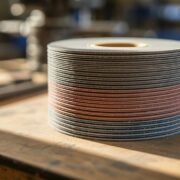Carpet cleaning is essential to maintaining a clean and healthy home or office environment. Over time, carpets can accumulate dirt, dust, stains, and even odors, making them look dull and unattractive. While regular vacuuming can help remove surface dirt, a deeper clean is often needed to rejuvenate carpets and restore them to their original condition. This is where carpet shampooing comes into play, and when done with the proper techniques and tools, it can effectively remove embedded dirt and stains, leaving your carpets looking fresh and smelling clean.
One key tool used in carpet shampooing is the carpet shampoo brush. These brushes come in various shapes, sizes, and materials. Still, they all serve the same purpose: to agitate the carpet fibers and loosen dirt and stains, allowing the shampoo solution to penetrate deeper for a thorough clean. This article will discuss some effective carpet shampoo brush techniques that can help you achieve professional-quality results when cleaning your carpets at home or in your business.
Choosing the Right Carpet Shampoo Brush
Before we delve into the techniques, choosing the right carpet shampoo brush for the job is essential. There are several factors to consider when selecting a brush, including the type of carpet fibers, the severity of stains, and personal preferences. Here are some common types of carpet shampoo brushes:
- Bristle Brushes: These brushes feature stiff bristles ideal for agitating tough stains and embedded dirt on durable carpet fibers like nylon or polyester. However, they may be too harsh for delicate carpets made of wool or silk.
- Rotating Brushes: Also known as carpet shampooer brushes, these brushes are typically attached to carpet cleaning machines and feature rotating heads that agitate the carpet fibers while applying shampoo solution. They are highly effective for deep cleaning large carpeted areas.
- Soft Bristle Brushes: These brushes have softer bristles that are gentle on delicate carpet fibers and are suitable for light cleaning or maintaining the cleanliness of freshly shampooed carpets.
- Handheld Brushes: Handheld carpet shampoo brushes are convenient options for spot cleaning or tackling small areas. They allow for precise application of shampoo solution and targeted agitation of stains.
Once you’ve chosen the right carpet shampoo brush for your needs, it’s time to master some effective techniques for deep cleaning your carpets.
Effective Carpet Shampoo Brush Techniques
- Preparation: Before starting the shampooing process, it’s essential to prepare the carpet by vacuuming thoroughly to remove loose dirt and debris. This step prevents the brush from pushing dirt deeper into the carpet fibers during shampooing. Additionally, pre-treat any visible stains with a carpet stain remover according to the manufacturer’s instructions.
- Diluting the Shampoo Solution: Follow the manufacturer’s instructions to dilute the carpet shampoo in a bucket of water. Using too much shampoo can leave behind a sticky residue, so it’s crucial to measure the appropriate amount for the size of the cleaned carpeted area.
- Sectioning: Divide the carpeted area into smaller sections to ensure thorough cleaning. Work on one section at a time, starting from the farthest corner of the room and moving backward toward the entrance. This prevents you from walking on freshly shampooed areas and re-soiling them.
- Applying the Shampoo Solution: Dip the carpet shampoo brush into the diluted solution and apply it to the carpet in a back-and-forth motion, working from one end of the section to the other. Focus on heavily soiled areas and stains, applying extra pressure to loosen dirt and grime.
- Agitation: Once the shampoo solution is applied, use the carpet shampoo brush to agitate the fibers. Depending on the type of brush you’re using, this may involve scrubbing, rotating, or brushing in overlapping strokes to ensure thorough coverage. Pay special attention to high-traffic areas and spots with stubborn stains.
- Rinsing: After agitating the carpet, it’s time to rinse away the shampoo residue. Fill a clean bucket with fresh water and use a clean sponge or cloth to rinse the carpet thoroughly, removing any remaining shampoo and dirt. Alternatively, you can use a rug doctor x3 with a rinse function for larger areas.
- Drying: Once thoroughly rinsed, use a wet/dry vacuum or carpet extractor to remove excess moisture. Open windows or use fans to promote airflow and speed up drying. Avoid walking on the carpet until scorched to prevent re-soiling and mold growth.
Tips for Optimal Results
- Test the carpet shampoo solution in an inconspicuous area before applying it to the entire carpet to check for colorfastness and compatibility.
- Work in small, manageable sections to ensure thorough cleaning and prevent the shampoo solution from drying out before you can agitate it.
- After shampooing, use a carpet grooming rake or comb to fluff the carpet fibers, giving them a fresh, like-new appearance.
- Consider using a carpet protector after shampooing to prolong the cleanliness of your carpets and make future cleanings easier.
Advanced Carpet Shampoo Brush Techniques for Deep Cleaning
In addition to the fundamental techniques mentioned above, several advanced carpet shampoo brush techniques can further enhance the cleaning process and effectively tackle stubborn stains and odors.
- Circular Motion Agitation: Instead of traditional back-and-forth motions, use a circular motion when agitating the carpet with the shampoo brush. This technique helps to loosen dirt and grime from different angles and can be particularly effective for lifting embedded debris from the carpet fibers.
- Double Pass Method: Consider using the double pass method for heavily soiled areas or stubborn stains. After applying the shampoo solution and agitating the carpet fibers with the brush, repeat the same area with a second pass. This extra agitation can help dislodge tough dirt and ensure a deeper clean.
- Cross-Hatching Technique: To ensure thorough coverage and agitation, use a cross-hatching technique. After applying the shampoo solution in one direction, switch to a perpendicular direction for the second pass. This crisscross pattern helps to agitate the carpet fibers from multiple angles, resulting in a more comprehensive clean.
- Edge Cleaning: Pay attention to the edges and corners of the carpeted area, as these areas often accumulate dirt and debris. Use the edge of the carpet shampoo brush or a specialized edge cleaning tool to reach tight spaces and ensure that every part of the carpet receives proper cleaning.
- Stubborn Stain Treatment: A targeted treatment approach may be necessary for particularly stubborn stains that don’t respond to regular shampooing. Apply a small amount of undiluted carpet shampoo directly to the stain and allow it to sit for a few minutes to penetrate. Then, use the carpet shampoo brush to agitate the stain before rinsing thoroughly.
Conclusion
In conclusion, mastering the art of supreme cleaners carpet shampooing requires the right tools and techniques. By choosing the appropriate carpet shampoo brush and following these effective techniques, you can achieve professional-quality results and keep your carpets looking and smelling fresh for years. Whether you’re cleaning your home or business, proper carpet maintenance is essential for a clean and healthy indoor environment.
Also Read Interesting articles at Disboard













